Caterpillar refers to the larval stage of a moth or butterfly or Lepidoptera. The word is Latin in origin and means hairy cat. During the year we see different caterpillars in the garden.
The good, the bad and the ugly!
Here is a Swallowtail caterpillar, Papilio polyxenes asterius. These like the leaves of carrots and parsley. I think I grow the parsley just to entice the swallowtail butterfly to lay eggs so I can photograph the caterpillar. These photos were taken late June. This turns into lovely yellow and black swallowtail butterflies.
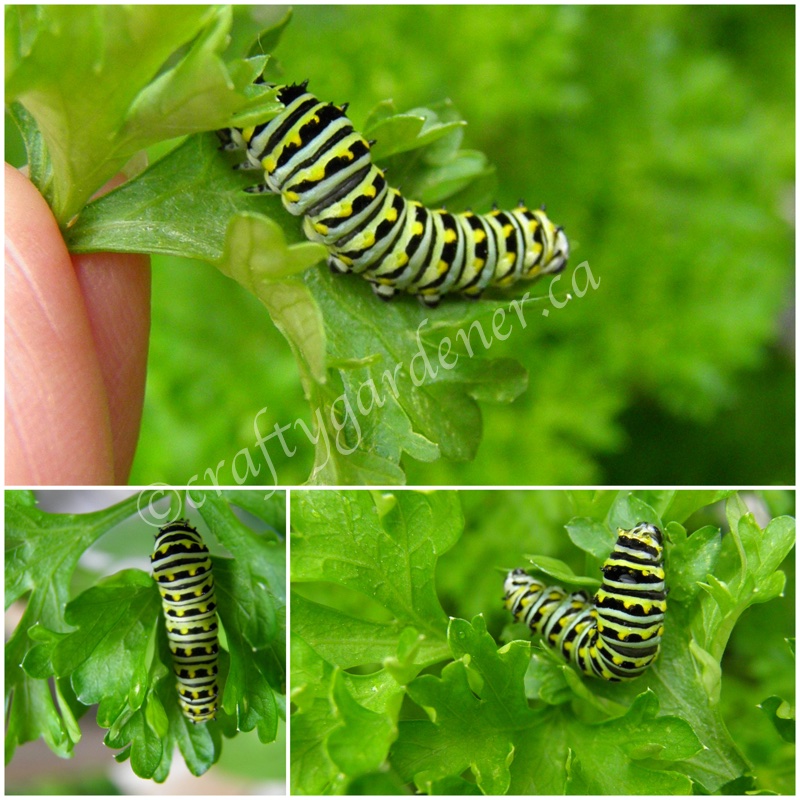
Monarch caterpillar or Danaus plexippus is munching away on milkweed. I always let the milkweed grow so the Monarch butterfly will be attracted to it and lay more caterpillars. We had an abundance of monarch butterflies as the gathered for migration.
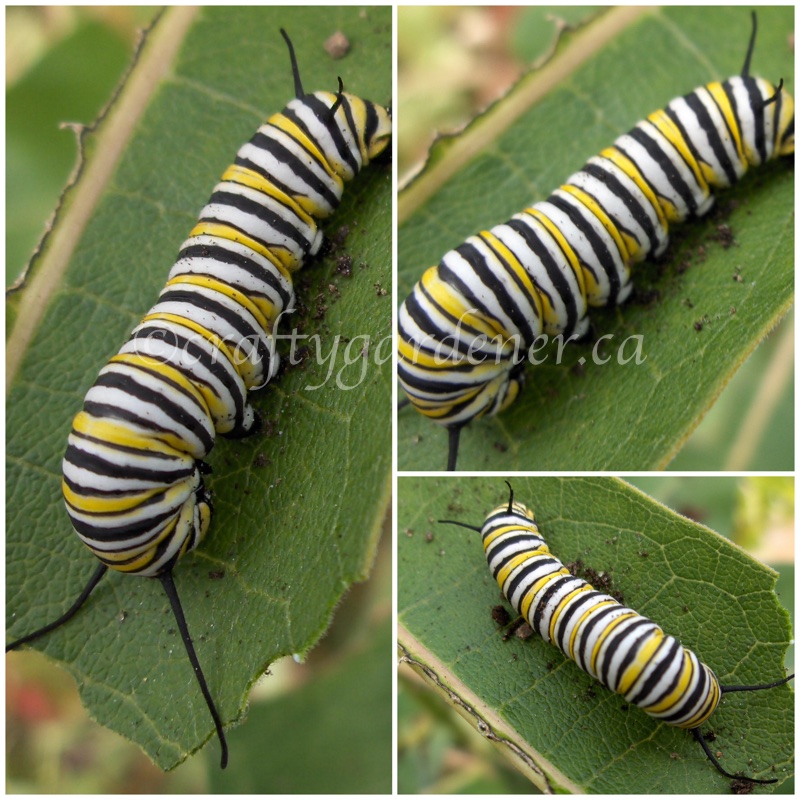
The Milkweed Tussock Moth (sometimes called the milkweed tiger moth) is covered in many little tufts along its body. It grows about 2.5 cm. and feeds on milkweed plant. I had to get out my field guide to identify this one. This turns into a tussock moth.
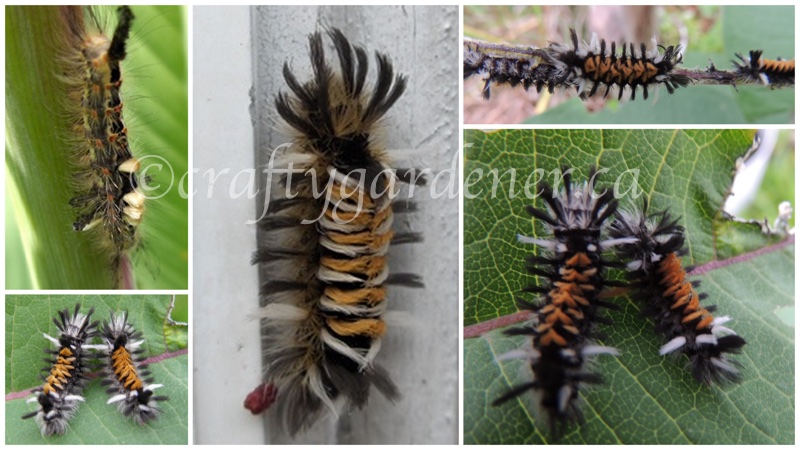
How dare these ugly caterpillars be on my tomato plants a few years ago. They are best known as the tomato hornworm and are 7 to 11 cm. long. They are probably the biggest caterpillar that is found in the garden.
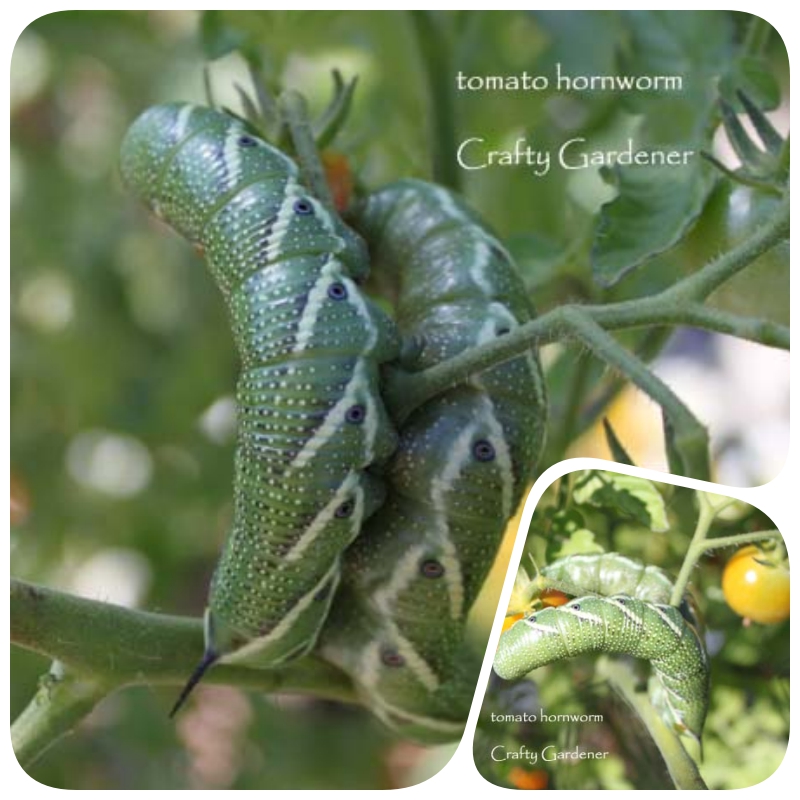
The black ‘horn’ at the back is for protection. I first noticed evidence of these ugly bugs when the odd tomato had little nibbles on it. At first I was accusing the chipmunk as he has been know to swipe the odd tomato or two, but usually leaves his evidence on the deck or railing. These tomatoes were still on the plant. On closer examination I noticed some of the stems had also been nibbled and that is what clued me in. So I started to scrutinize the plants and discovered these two ugly bugs.
I immediately snipped off the branch they were on and let it fall into a container whereby they were eliminated. I wondered how did they get on my plants in the first place. A little research on Google and I found out the moth overwinters in the soil, lays eggs in the spring and hence the life cycle begins. Thank goodness I haven’t seen these caterpillars in the garden for a few years.
The tomato hornworm is the larvae stage of the five spotted hawk moth, which is a mottled gray brown colour with yellow spots on its sides. some people think this is the caterpillar for the hummingbird sphinx moth, they are similar but not the same.
This pipevine swallowtail caterpillar is interesting colours. The swallowtail butterfly that emerges has black wings with blue markings on it.
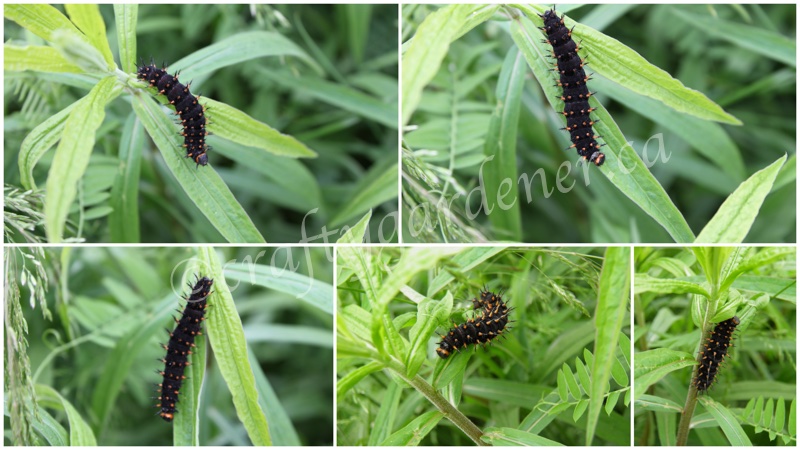
The wooly bear caterpillars have nothing to do with bears at all but caterpillars that will turn into an Isabella moth. It is called a wooly bear because its coloured bristles, or setea, look like the fur on a bear. In the Fall they are searching for the perfect place to curl up for a long winter’s nap. They like to be under logs, rocks or bark. Their body temperature drops considerably so they can tolerate very cold temperatures. This year we have seen lots of wooly bear caterpillars.

Here you can see the wooly bear stretching upwards. You can see some of the many feet and a glimpse of its head. The colour on the wooly bear changes as it matures. We found this one crawling across the driveway one sunny afternoon. So when you look for some wooly bears, check the length of the bands, record it somewhere and then check to see if the predictions are right about winter. Wooly bear caterpillars turn into the Isabella tiger moth.
Folklore has it that the black bands of colour determines how long and cold the winter will be. The longer they are the colder the winter will be. If the head is really dark the winter will start out very severe and if the tail is really dark the end of winter will drag on and on and be cold. The wooly bear has 13 segments to its body and they say it corresponds to the 13 weeks of winter. If they are moving south it could mean a colder winter and if they are moving north it won’t be quite as bad.
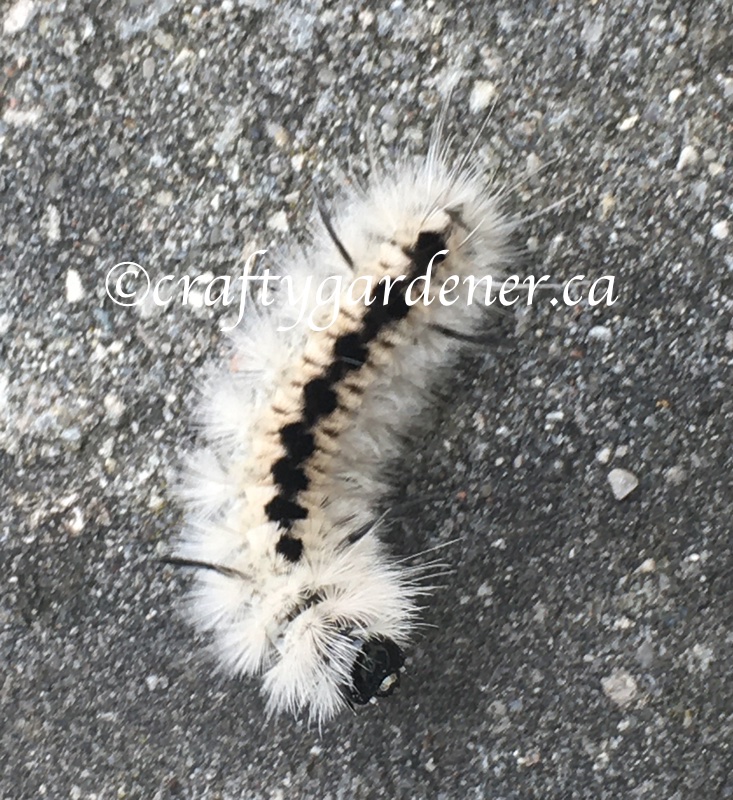
This is a hickory tussock moth caterpillar. We saw it scurrying quickly across the front patio. It is advisable not to touch these caterpillars as they leave you with the sensation of touching stinging nettle and they can even make your skin red. We just let it go on its merry way, not sure where it came from or where it was going. It turns into a hickory tussock moth.
The more you look the more you see. Nature never fails to amaze me.
More butterflies:
Other butterflies in the garden:





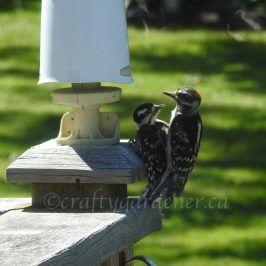



Jennifer Jilks
Aren’t they wonderful? I shall miss them.
Crafty Gardener
There have been lots of caterpillars this year, especially the wooly bears.
Myrtle
I have never seen so many different caterpillars Linda! I recognized only i for sure. The tomato hornworm is ugly.I enjoyed the detailed information on all these caterpillars.
Crafty Gardener
Lots of different ones this year Myrt, love finding them and taking photos.
eileeninmd
Hello, what an awesome post and info on the various caterpillars! I have not seen most of these caterpillars in my yard, But I am seeing lots of the Wooly bear caterpillars now. They are all beautiful, lovely photos. Thank you for linking up and sharing your post. Happy Saturday, Enjoy your weekend. PS, thanks for the visit and comment.
Lavender Dreamer
Oh I love these all and you’ve shared so much great info! I’ve always heard that about predicting the winter withe the wooly worms! I don’t think I’ve seen those down here but we did in NC! Enjoy your weekend!